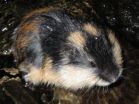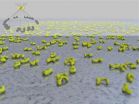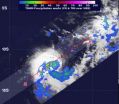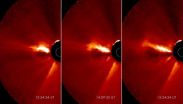NIH scientists identify protective role for antibodies in Ebola vaccine study
2013-01-15
(Press-News.org) WHAT:
Researchers at the National Institutes of Health (NIH) and Oregon Health & Science University (OHSU) have found that an experimental vaccine elicits antibodies that can protect nonhuman primates from Ebola virus infection. Ebola virus causes severe hemorrhagic fever in humans and nonhuman primates, meaning that infection may lead to shock, bleeding and multi-organ failure. According to the World Health Organization, Ebola hemorrhagic fever has a fatality rate of up to 90 percent. There is no licensed treatment or vaccine for Ebola virus infection.
Several research groups have developed experimental vaccine approaches that protect nonhuman primates from Ebola virus and the closely related Marburg virus. These approaches include vaccines based on DNA, recombinant adenovirus, virus-like particles, and human parainfluenza virus 3. But how these vaccine candidates confer protection is an area that is still being explored: Do they activate immune cells to kill the invading virus? Or do they elicit antibodies that block infection?
In this study, scientists at NIH's National Institute of Allergy and Infectious Diseases and OHSU's Vaccine & Gene Therapy Institute built on earlier work with an experimental vaccine composed of an attenuated vesicular stomatitis virus carrying a gene that codes for an Ebola virus protein. They observed how cynomolgus macaques responded to a challenge of Ebola virus before and during treatment with the vaccine and in conjunction with depleted levels of immune cells. Their results showed that important immune cells—CD4+ T cells and CD8+ T cells—had a minimal role in providing protection, while antibodies induced by the vaccine appeared to be critical to protecting the animals.
The scientists say this finding will help improve future Ebola virus vaccine development. They plan to focus their studies on what level of antibody production is needed to establish protection from Ebola virus infection in humans.
ARTICLE:
A Marzi et al. Antibodies are necessary for rVSV/ZEBOV-GP mediated protection against lethal Ebola virus challenge in nonhuman primates. Proceedings of the National Academy of Sciences. DOI: 10.1073/pnas.1209591110 (2013).
WHO:
Heinz Feldmann, M.D., Ph.D., chief of the Laboratory of Virology at NIAID's Rocky Mountain Laboratories. Dr. Feldmann is an expert on viral hemorrhagic fevers and emerging viruses.
###
CONTACT:
To schedule interviews, please contact Ken Pekoc, (301) 402-1663, kpekoc@niaid.nih.gov.
NIAID conducts and supports research—at NIH, throughout the United States, and worldwide—to study the causes of infectious and immune-mediated diseases, and to develop better means of preventing, diagnosing and treating these illnesses. News releases, fact sheets and other NIAID-related materials are available on the NIAID Web site at http://www.niaid.nih.gov.
About the National Institutes of Health (NIH): NIH, the nation's medical research agency, includes 27 Institutes and Centers and is a component of the U.S. Department of Health and Human Services. NIH is the primary federal agency conducting and supporting basic, clinical, and translational medical research, and is investigating the causes, treatments, and cures for both common and rare diseases. For more information about NIH and its programs, visit http://www.nih.gov/.
NIH...Turning Discovery Into Health
END
ELSE PRESS RELEASES FROM THIS DATE:
2013-01-15
An effort to develop software that unravels the complexities of how proteins fold is paying dividends in new findings on how they misfold, according to researchers at Rice University.
The study published this week in the Proceedings of the National Academy of Sciences by chemist Peter Wolynes and his team at Rice's BioScience Research Collaborative should be of particular interest to those who probe the roots of degenerative diseases associated with the aggregation of amyloid fibers in the body. These include Alzheimer's and Parkinson's diseases and Type 2 diabetes.
The ...
2013-01-15
UNIVERSITY PARK, Pa. -- Eating diets high in sugar and fat may not affect the health outcomes of older adults ages 75 and up, suggesting that placing people of such advanced age on overly restrictive diets to treat their excess weight or other conditions may have little benefit, according to researchers at Penn State and Geisinger Healthcare System.
"Historically people thought of older persons as tiny and frail," said Gordon Jensen, head of the Department of Nutritional Sciences at Penn State, "but that paradigm has changed for many older persons. Currently, 30 percent ...
2013-01-15
The climate changes depicted by climatologists up to the year 2080 will benefit most mammals that live in northern Europe's Arctic and sub-Arctic land areas today if they are able to reach their new climatic ranges. This is the conclusion drawn by ecologists at Umeå University in a recently published article in the journal Plos ONE.
The scientists Anouschka Hof, Roland Jansson, and Christer Nilsson of the Department of Ecology and Environmental Science at Umeå University investigated how future climate changes may come to impact mammals in northern Europe's Arctic and ...
2013-01-15
NEW YORK (Jan. 14, 2013) -- Replacing the combination of brand-name, antiretroviral drugs currently recommended for control of HIV infection with soon-to-be-available generic medications could save the U.S. health care system almost $1 billion a year but may diminish the effectiveness of HIV treatment. A study led by Massachusetts General Hospital (MGH) and Weill Cornell Medical College investigators, appearing in the January 15 Annals of Internal Medicine, examines the potential impact of such a change.
"The switch from branded to generic antiretrovirals would place ...
2013-01-15
LA JOLLA, CA – January 14, 2013 – Using an innovative approach, scientists at The Scripps Research Institute (TSRI) have determined the structure of Ltn1, a recently discovered "quality-control" protein that is found in the cells of all plants, fungi and animals.
Ltn1 appears to be essential for keeping cells' protein-making machinery working smoothly. It may also be relevant to human neurodegenerative diseases, for an Ltn1 mutation in mice leads to a motor-neuron disease resembling amyotrophic lateral sclerosis (ALS, also known as Lou Gehrig's disease).
"To better ...
2013-01-15
A research team involving several scientists from the University of Colorado Boulder has found an unexpected silver lining in the devastating pine beetle outbreaks ravaging the West: Such events do not harm water quality in adjacent streams as scientists had previously believed.
According to CU-Boulder team member Professor William Lewis, the new study shows that smaller trees and other vegetation that survive pine beetle invasions along waterways increase their uptake of nitrate, a common disturbance-related pollutant. While logging or damaging storms can drive stream ...
2013-01-15
TORONTO, Jan 14, 2013—Taking a vitamin D supplement and drinking cow's milk are the two most important factors that determine how much vitamin D is in a child's body, new research has found.
Those factors play a bigger role than even skin colour and exposure to the sun, according to Dr. Jonathon Maguire, a researcher and pediatrician at St. Michael's Hospital.
"Early childhood is a critical stage in human development, so achieving and maintaining optimal vitamin D levels in early childhood may be important to health outcomes in later childhood and adulthood," Dr. Maguire ...
2013-01-15
Tropical Cyclone Emang developed in the Southern Indian Ocean on Sunday, Jan. 13 about 525 nautical miles east-southeast of Diego Garcia. At that time, infrared satellite imagery revealed that the low level circulation center was partially exposed to outer winds, and there was a burst of thunderstorm development over the northwestern quadrant.
NASA's Tropical Rainfall Measuring Mission (TRMM) satellite captured rainfall rates in Tropical Storm Narelle on Jan. 13 at 0907 UTC (5:07 a.m. EST). Moderate and heavy rainfall was occurring around the center of circulation, where ...
2013-01-15
On Jan. 13, 2013, at 2:24 a.m. EST, the sun erupted with an Earth-directed coronal mass ejection or CME. Not to be confused with a solar flare, a CME is a solar phenomenon that can send solar particles into space and reach Earth one to three days later.
Experimental NASA research models, based on observations from the Solar Terrestrial Relations Observatory (STEREO) and the ESA/NASA mission the Solar and Heliospheric Observatory, show that the CME left the sun at speeds of 275 miles per second. This is a fairly typical speed for CMEs, though much slower than the fastest ...
2013-01-15
Athens, Ga. – New research from the University of Georgia exposes a large discrepancy in the length of time patients expect an acute cough illness, also called acute bronchitis, to last and the reality of the illness. This mismatch may be a factor in the over-prescription of antibiotics.
Examining the gap in patient expectations and the actual length of time the body takes to rid itself of a chest cold, Dr. Mark Ebell, associate professor of epidemiology in the UGA College of Public Health, recently published an article in the Annals of Family Medicine. His results show ...
LAST 30 PRESS RELEASES:
[Press-News.org] NIH scientists identify protective role for antibodies in Ebola vaccine study



